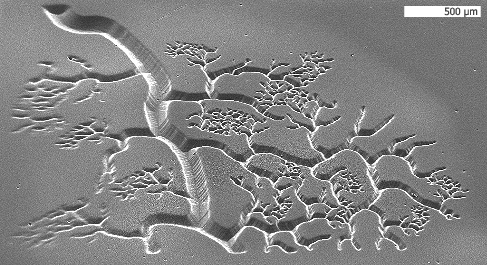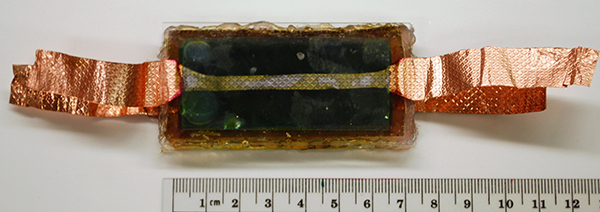
Most
people understand genes to be
specific
segments of DNA that determine traits or diseases that are inherited.
Textbooks suggest that genes are copied (“transcribed”) into RNA
molecules, which are then used as templates for making protein – the
highly diverse set of molecules that act as building blocks and engines
of our cells. The truth, it now appears, is not so simple.
As
part of a huge collaborative effort called ENCODE (Encyclopedia of DNA
Elements), a research team led by Cold Spring Harbor Laboratory (CSHL)
Professor Thomas Gingeras, Ph.D., today publishes a genome-wide analysis
of RNA messages, called transcripts, produced within human cells.
Their analysis – one component of a massive release of research results
by ENCODE teams from 32 institutes in 5 countries, with 30 papers
appearing today in 3 different high-level scientific journals-- shows
that three-quarters of the genome is capable of being transcribed. This
figure is important because it indicates that nearly all of our genome
is dynamic and active. It stands in marked contrast to consensus views
prior to ENCODE’s comprehensive research efforts, which suggested that
only the small protein-encoding fraction of the genome was transcribed,
and therefore important.
The vast amount of data generated with advanced technologies by
Gingeras’ group and others in the ENCODE project is likely to radically
change the prevailing understanding of what defines a gene, the unit we
routinely use, for instance, to speak of inheritable traits like eye
color or to explain the causes of and susceptibility to most diseases,
running the gamut from cancer to schizophrenia to heart disease.
In
2003 the ENCODE project consortium was set up by the U.S. government’s
National Human Genome Research Institute (NHGRI) to examine the newly
minted sequence of the human genome in greater depth. At the time, the
genome was thought of as a linear molecule of DNA with “genes” being
contained within isolated sections that make up just 1%-2% of its total
length. The long stretches of DNA between these gene islands were once
thought to be mostly functionless spacers, padding, or even “junk DNA.”
Through the work of Gingeras and others in this latest phase of the
ENCODE project consortium, we now know that most of the DNA around
protein-encoding genes is also capable of being transcribed into RNA –
another way of saying that it has the potential of performing useful
functions in cells.
In preliminary ENCODE results published
in 2007, the researchers closely examined about 1% of the human genome.
The initial results showed that much more of our DNA could be
transcribed than previously thought. Far from being padding, many of
these RNA messages appeared to be functional.
The Gingeras lab
discovered potentially new classes of functional RNAs in this
preliminary work. The additional knowledge that parts of one gene or
functional RNA can reside within another were surprising, and suggested a
picture of the architecture of our genome that was much more complex
than previously thought.
What the new ENCODE data reveals
Two of the 30 papers published by Gingeras and other ENCODE colleagues,
including CSHL Professor and HHMI Investigator Gregory Hannon, Ph.D.,
who is also a co-author in this study, today mark the culmination of
project’s second phase. What distinguishes the data analyzed in this
phase is comprehensiveness. The initial observations of 2007 are now
extended to cover the entire human genome – a tour-de-force effort in
which the transcribed RNA from different sub-cellular compartments of 15
human cell lines was analyzed.
Although the results vary
between cell lines, a consensus picture is emerging. In addition to
showing that up to three-quarters of our DNA may be transcribed into
RNA, the data strongly suggests, according to Gingeras, that a large
percent of non-protein-coding RNAs are localized within cells in a
manner consistent with their having functional roles.
The
current outstanding question concerns the nature and range of those
functions. It is thought that these “non-coding” RNA transcripts act
something like components of a giant, complex switchboard, controlling a
network of many events in the cell by regulating the processes of
replication, transcription and translation – that is, the copying of DNA
and the making of proteins based on information carried by messenger
RNAs.
With the understanding that so much of our DNA can be
transcribed into RNA comes the realization that there is much less space
between what we previously thought of as genes, Gingeras points out.
“We see the boundaries of what were assumed to be the regions between
genes shrinking in length,” he says, “and genic regions making many
overlapping RNAs.” It appears, he continues, that the boundaries of
conventionally described genes are melding together, challenging the
notion that a gene is a discrete, localized region of a genome separated
by inert DNA. “New definitions of a gene are needed,” Gingeras says.
What
are the practical implications? According to Gingeras, they include
being able to identify possible causes for natural traits such as height
or hair loss and disease states such as cancer. Many genetic variations
associated with a trait often map to what were formally believed to be
“spacer” regions.
“With our increasingly deeper understanding
that such regions are related to the neighboring or “distal” protein
coding regions – via the creation of non-coding RNAs – we will now seek
underlying explanations of the association of the genetic variation and
traits of interest.” This topic is explored in a second paper
published today that summarizes the finding of all the consortium groups
participating in the current phase of the ENCODE project: The ENCODE
Project Consortium. 2012. An integrated encyclopedia of DNA elements in
the human genome.
Nature –
doi:10.1038/nature11247.
“Exploration of the genome is akin to our efforts at exploring our
physical universe,” Gingeras says. “We expect to be amazed and excited
by our future efforts to map and explore our personal genetic
universes.”
“Landscape of transcription in human cells” is published online in
Nature on September 5, 2012. The authors are: Sarah Djebali, Carrie A. Davis and 83 others. The paper can be obtained online at
doi:10.1038/nature11233. Other new ENCODE results can be found in the following journals:
Nature (6 papers);
Genome Research (18 papers); and
Genome Biology (6 papers).
The full ENCODE Consortium data sets can be freely accessed through the
ENCODE project portal as well as at the
University of California at Santa Cruz genome browser, the
National Center for Biotechnology Information, and the
European Bioinformatics Institute. Topic threads that run through several different papers can be explored via the ENCODE microsite page at
Nature.com/encode.
source : http://www.cshl.edu/Article-Gingeras/massive-genome-analysis-by-encode-redefines-the-gene-and-sheds-new-light-on-complex-disease








